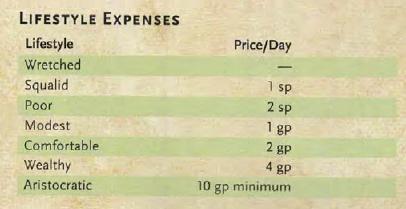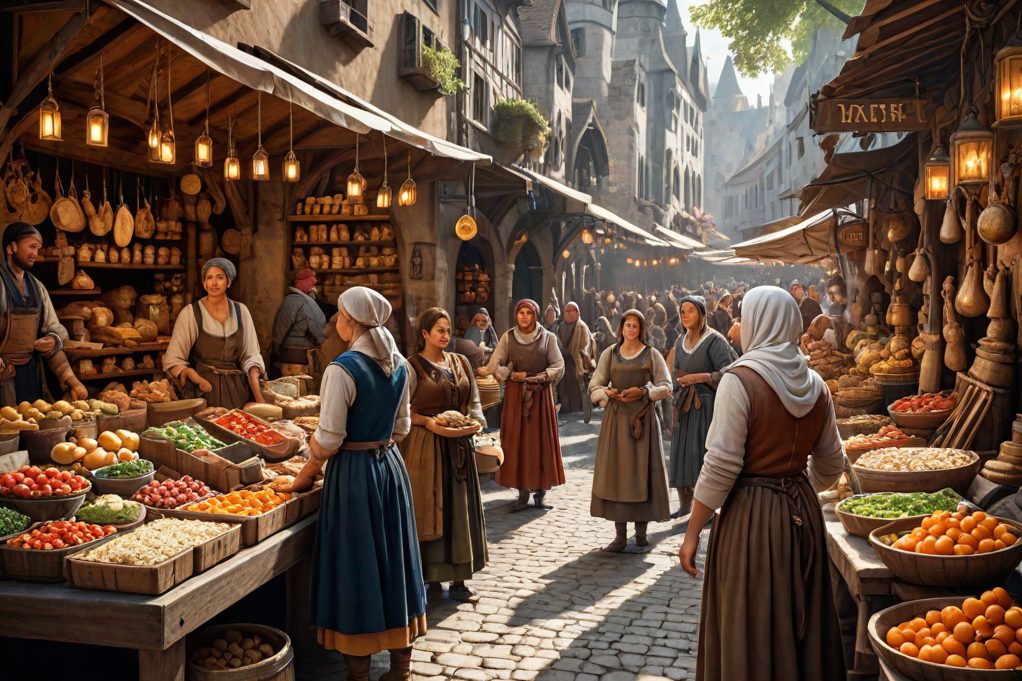As I’m preparing to launch a campaign-style 5e D&D campaign with The Black Talons, it occurred to me that I’ll need to pay (pun intended) more attention to the in-world economics of the world.
In 5e, there’s an abstraction for ongoing "living expenses" so that you don’t have to spend all your time bookkeeping. It gives eight different "levels" of socioeconomic status ranging from "Wretched" to "Aristocratic".

I wanted to get a "feel" of what that roughly translated to in modern US dollars. Looking at the descriptions, I thought it would be most effective to orient around Poor, Modest, and Comfortable.
Poor. A poor lifestyle means going without the comforts available in a stable community. Simple food and lodgings, threadbare clothing, and unpredictable conditions result in a sufficient, though probably unpleasant, experience. 0.2 gp (gold pieces) per day, 6gp/month.
Modest. A modest lifestyle keeps you out of the slums and ensures that you can maintain your equipment. You live in an older part of town, renting a room in a boarding house, inn, or temple. You don’t go hungry or thirsty, and your living conditions are clean, if simple. 1 gp/day, 30gp/month.
Comfortable. Choosing a comfortable lifestyle means that you can afford nicer clothing and can easily maintain your equipment. You live in a small cottage in a middle-class neighborhood or in a private room at a fine inn. 2gp/day, 60gp/month.
At first I tried to tie "poor" to the US poverty line (or the federal minimum wage) of $7.25 an hour, and did some ratios:
$7.25 : 0.2gp = X : 1gp
That makes the "modest" lifestyle (which pretty much describes a living wage) equivalent to $36.25/hour, and "comfortable" a massive $72.50/hr, or an annual salary of $150,800, which is a more than a little bit above "comfortable." The math also doesn’t feel right if you make minimum wage equivalent to "modest"; that makes "comfortable" $17.50 an hour. For context, Ohio’s living wage is $19.40/hour.
If you swap the ratio around and plug in the living wage and solve for X, like so:
$7.25 : 0.2gp = 19.40 : X
then you get that the living wage is roughly equivalent to half a gold piece a day (0.54), not 1 like it says in the rules. So instead I swapped the numbers around and solved for the "poor" condition (since I’m literally using the US poverty level here):
$7.25 : X = 19.40 : 1
which results in the actual cost of the "poor" lifestyle nearly doubling to 0.37 gp a day (three silver, 7 copper). Using that same ratio also results in the "comfortable" lifestyle equating $38.8/hr, which does feel about right.
While this was really interesting (for me), while doing my research I ran across D&D Alley’s much more thorough exploration of the same topic, which is a pretty interesting (and nuanced) read. That was where I found this absolutely genius conversion that really made it hit:
there’s an easy way to quickly convert prices into (dollars):
1 cp = $1
1 sp = $10
1 gp = $100
Not only does the math pretty well work out there, it also provides a visceral gut-punch about how much stuff costs. Suddenly that 25gp mastiff is a freaking investment, let alone a 75gp riding horse. Particularly if you’re in a low-magic world (like the one I run), then it makes craftsmanship a lot more valuable. That 1gp bedroll seems super expensive until you think that it’s the medieval equivalent of a fancy sleeping bag. Even in our industrial and mass-produced society, a quality sleeping bag will run you $25 – $65, and since it’s all hand-made, having it be two to four times as expensive makes sense. Likewise, tents may be as cheap as $25, but it’s not difficult to find quality tents costing over $150 in the modern day, so having a good two-person tent costing 2gp (or $200) in a pre-industrial society is completely reasonable.
With all that in mind, "lifestyle" becomes a lot more useful without adding any real overhead in terms of mechanics. It also gives the characters an additional reason to do things… and lets you, as a GM, appropriately set both the price and frequency of the missions your characters go on.
